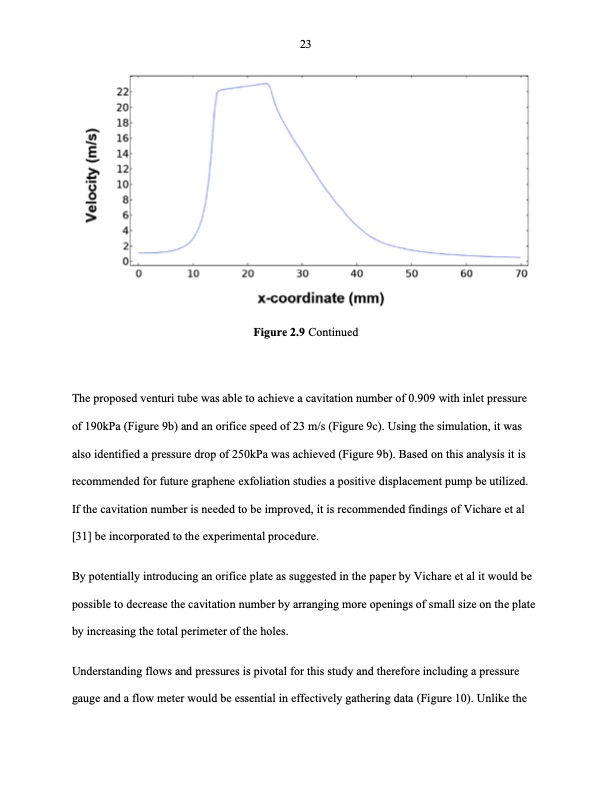PDF Publication Title:
Text from PDF Page: 029
23 Figure 2.9 Continued The proposed venturi tube was able to achieve a cavitation number of 0.909 with inlet pressure of 190kPa (Figure 9b) and an orifice speed of 23 m/s (Figure 9c). Using the simulation, it was also identified a pressure drop of 250kPa was achieved (Figure 9b). Based on this analysis it is recommended for future graphene exfoliation studies a positive displacement pump be utilized. If the cavitation number is needed to be improved, it is recommended findings of Vichare et al [31] be incorporated to the experimental procedure. By potentially introducing an orifice plate as suggested in the paper by Vichare et al it would be possible to decrease the cavitation number by arranging more openings of small size on the plate by increasing the total perimeter of the holes. Understanding flows and pressures is pivotal for this study and therefore including a pressure gauge and a flow meter would be essential in effectively gathering data (Figure 10). Unlike thePDF Image | Hydrodynamic cavitation exfoliation layered graphene nano

PDF Search Title:
Hydrodynamic cavitation exfoliation layered graphene nanoOriginal File Name Searched:
DeAlwis-iastate-0097M-19074.pdfDIY PDF Search: Google It | Yahoo | Bing
Salgenx Redox Flow Battery Technology: Power up your energy storage game with Salgenx Salt Water Battery. With its advanced technology, the flow battery provides reliable, scalable, and sustainable energy storage for utility-scale projects. Upgrade to a Salgenx flow battery today and take control of your energy future.
CONTACT TEL: 608-238-6001 Email: greg@infinityturbine.com (Standard Web Page)